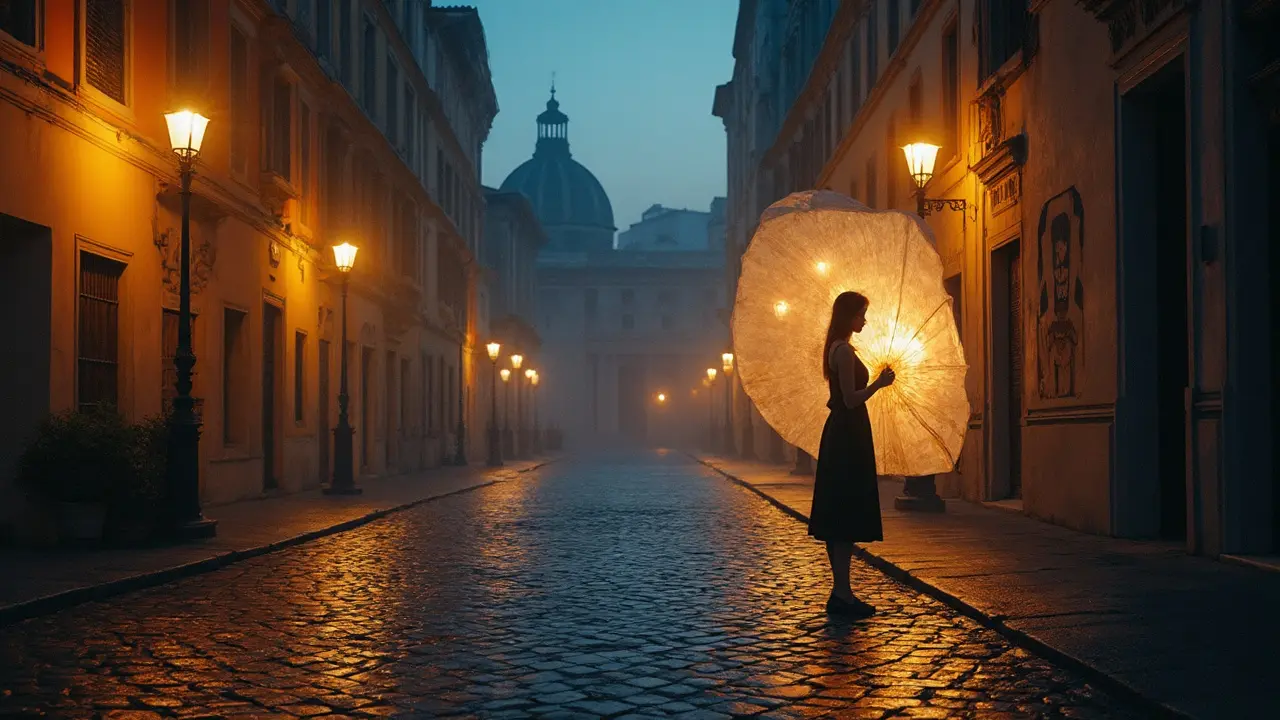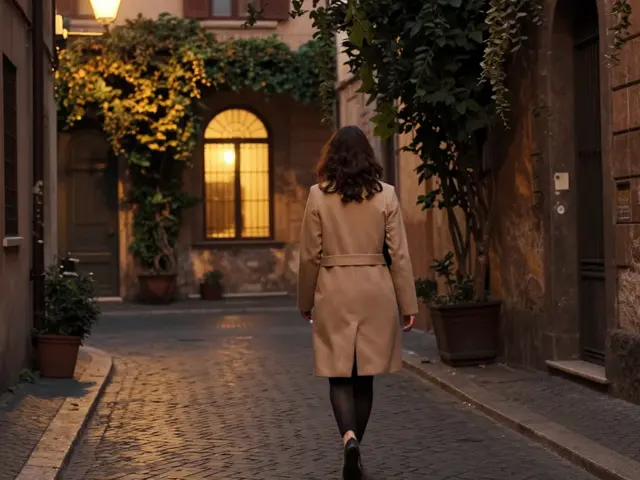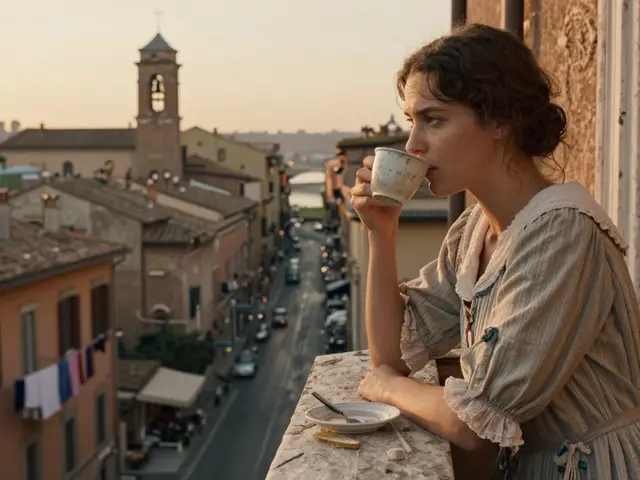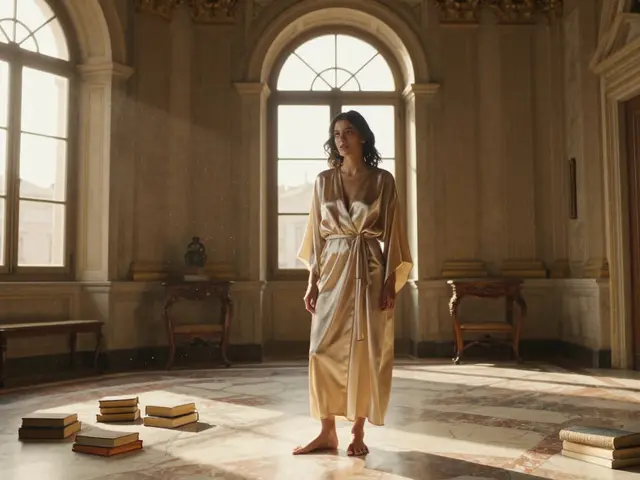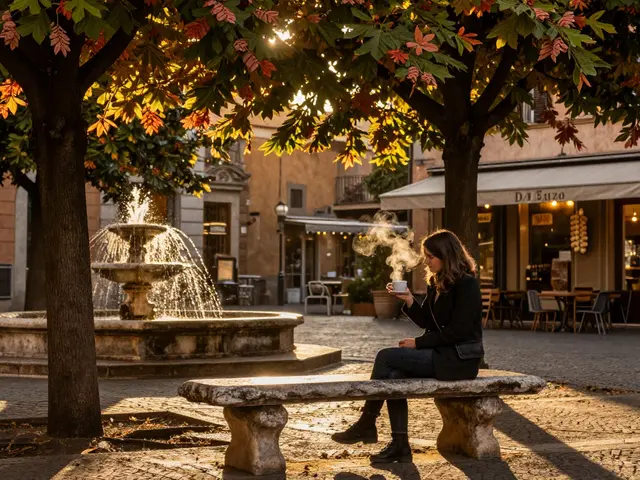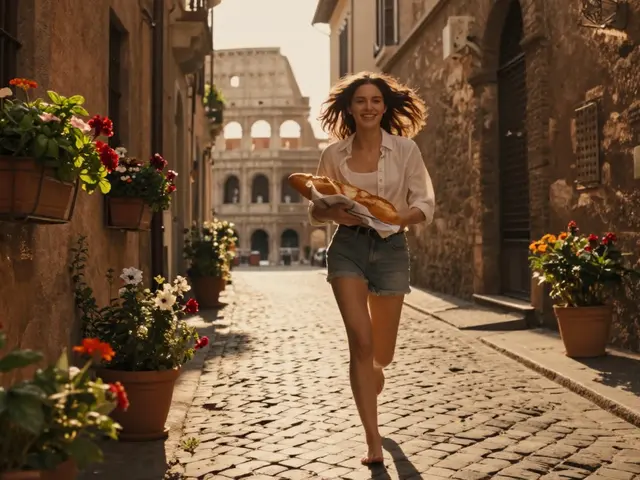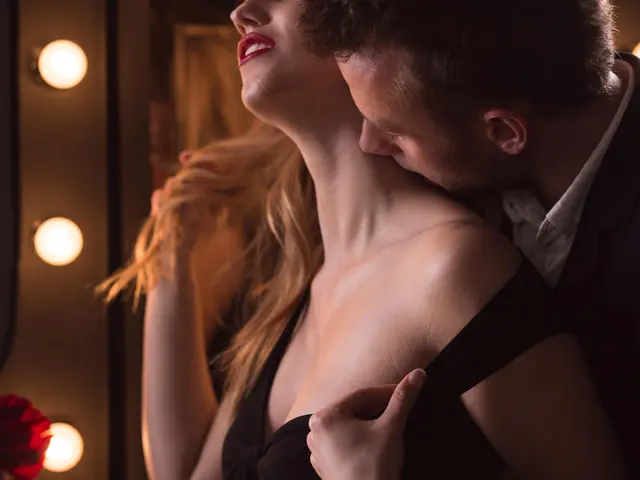Grab your phone at dusk in Rome and you’ll see what keeps photographers and artists coming back—the light does half the work, if you know when and where to look. Federica Tommasi figured this out early. She’s built her career on understanding not just the famous ruins, but the way light moves around them, especially in the golden hour and after sundown.
If you ever wondered why pictures of Rome never look quite right on your phone, you’re not alone. The city’s lights play tricks: street lamps with a warm glow, bouncing off ancient stones, and that odd pink tint at sunset. Tommasi leans into that instead of fighting it. That’s why her images and installations feel so alive—you get the mood, not just the scenery.
Trying to capture that magic for yourself? Watch how the colors change about an hour before sunset. Tommasi once joked in an interview that Rome only “shows its true face when you’re willing to get a little lost after dark.” The best moments usually aren’t on the main streets but in tiny alleys, where a single lantern can make a broken wall look like art. Next time you’re wandering Rome, let the light guide you—you’ll see more than any travel guide promises.
- Why Roman Lighting Feels Different
- Federica Tommasi’s Artistic Approach
- How She Captures Rome’s Magic
- What Sets Her Work Apart
- Practical Tips for Seeing Rome Through Her Lens
Why Roman Lighting Feels Different
There’s something about Roman lights that just isn’t the same anywhere else. It’s not only about the old lamps or the famous golden glow. The mix comes from a bunch of things working together—original street lanterns, city rules that keep old styles alive, and even the types of stones used in the buildings.
The city council actually sets limits on the brightness and color of public lighting in most of the historical center. That’s why Rome hasn’t gone all LED white—it sticks to amber or yellow lamps, so everything looks softer. It cuts down on glare and lets buildings stand out after sunset. In 2018, when Rome tried to switch to modern LEDs, there was pushback from local artists and architects, and most of the old neighborhoods kept the warmer light.
Natural sunlight is another big factor. Rome sits at about 41.9° latitude. That gives it longer golden hours in spring and fall, so for roughly 45 minutes at the end of most days, the whole city glows in orange and pink. Even big TV crews time their shoots with this window for the best scenes. Comparing sun hour data, Rome gets about 2,526 hours of sunshine a year—way more than London (1,633) or Paris (1,662). It makes colors pop much more, even in the evening.
| City | Annual Sunlight Hours |
|---|---|
| Rome | 2,526 |
| London | 1,633 |
| Paris | 1,662 |
And then there’s the stone—those yellows, reds, and creams you see everywhere. Old Roman bricks and travertine reflect warm light back almost like a filter. Stack that up with the city’s strict limits on tall buildings—hardly anything over seven stories—and you’ve got a sunset that never gets blocked, pouring right down the narrow streets.
- Stay in the historic center for the best lighting—Campo de’ Fiori, Trastevere, and near the Pantheon are prime spots.
- Go out during golden hour if you want pictures that look like Tommasi’s work. The colors are strongest then.
- Avoid flashy phone filters. Let the city’s natural tones do the job—they’re what makes Roman lights famous in the first place.
Federica Tommasi’s Artistic Approach
Federica Tommasi doesn’t just work in Rome—she works with Rome. Her thing is letting the city’s natural and artificial lights drive each project. She’s famous for putting real Roman atmosphere front and center, whether it’s in a painting or an outdoor installation. She’s said in interviews, “You can’t outshine Rome, so why try?” That’s why she uses light as a tool, not just a decoration.
One trick Tommasi uses a lot is picking lighting setups that actually make the city’s colors pop. For example, in her 2023 exhibit "Sotto il Faro" she used custom-made spotlights that matched the actual color temperature of Rome’s streetlights. She measured the exact Kelvin value (2600K–2900K) to get that soft, amber glow. Instead of covering up shadows, she’ll let them stretch across the scene, so you feel like you’re really there after hours. That’s the vibe most tourists miss when snapping photos.
Another thing—she’s all about audience interaction. Some of her interactive pieces invite people to move through patches of light and shadow. This isn’t just art for looking at. She wants people to feel wrapped up in the Roman night, even if it means stepping outside their comfort zone for a second. She claims you don’t understand Rome unless you see it from the ground, feeling a bit lost and surprised by what the light reveals.
- She rarely uses harsh white light—always sticking with warm color tones for a more authentic experience.
- She plans installations based on times of day, knowing dusk and dawn play differently on the ruins and facades.
- She pays attention to weather data, since humidity and even pollution affect how lighting settles on the stones.
If you’re curious what sets Tommasi’s work apart, just check the stats below showing light preferences in her recent works:
| Exhibit | Average Light Temperature (Kelvin) | Lighting Used |
|---|---|---|
| Sotto il Faro (2023) | 2700K | Custom Roman streetlight replicas |
| Notti Sottili (2022) | 2850K | Filtered LED with warm gels |
| Luci Trasteverine (2021) | 2650K | Incandescent lanterns |
Bottom line, she’s not chasing trends or studio-perfect shots. Tommasi puts the real Roman lights in charge, nudging viewers to experience Rome as it actually feels, way after the crowds thin out.
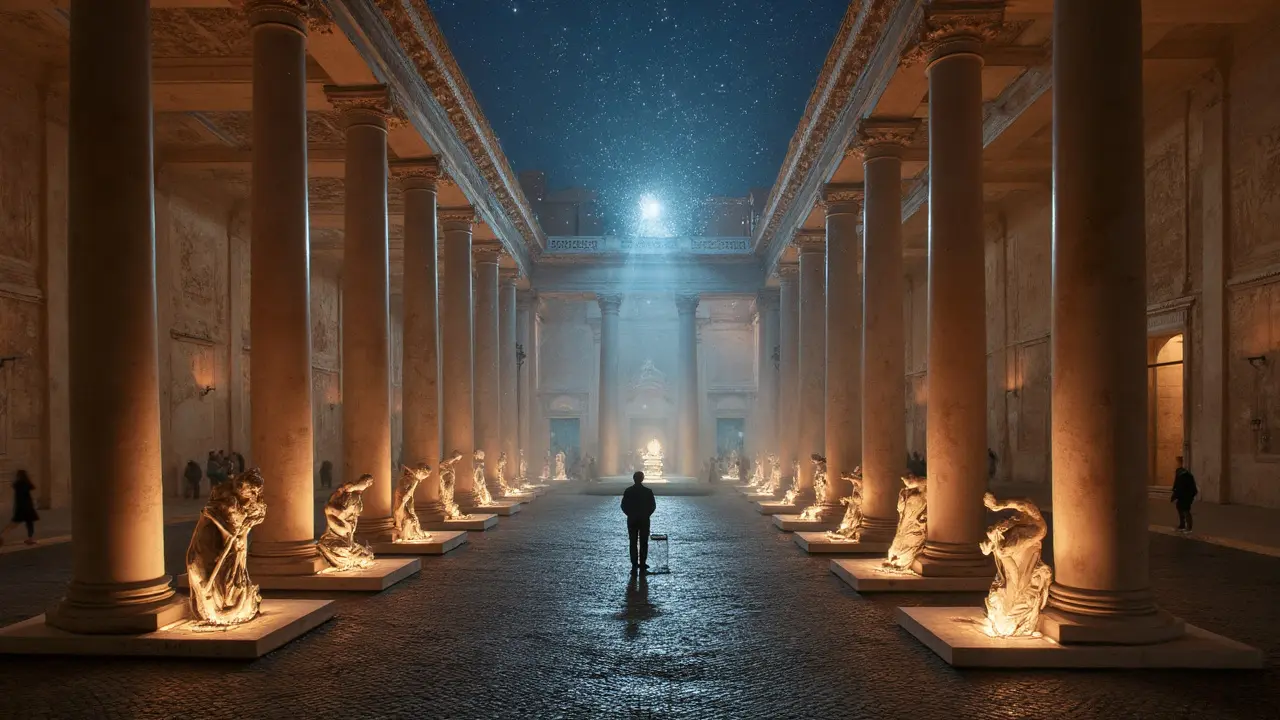
How She Captures Rome’s Magic
If you look at Federica Tommasi’s portfolio, you’ll notice she doesn’t go for postcard shots. Instead, she’s all about timing and the vibe that Roman lights throw on old walls and bustling piazzas. Her secret? She plans her shoots around certain hours when the city’s light is at its best, and sometimes waits days for the right weather or shadows.
The “blue hour” (right after sunset) is her favorite. According to Tommasi, this time is when Rome glows—not just from artificial lights but from the sky itself. She often picks spots that most tourists skip, like the small Vicolo del Cinque in Trastevere, where one lantern can light up the whole alley with a warm, moody feel.
Tommasi also pays attention to practical stuff like lens filters and light meters. She’s said that using a polarizing filter, especially in Rome’s humid spring air, helps cut glare off stones and gives colors a more natural look. Sometimes, she’ll use a simple tripod and a smartphone to get time-lapse shots as shadows crawl up monuments like the Pantheon.
If you want to see what she sees, don’t just look. Try these tips:
- Spend time in lesser-known neighborhoods around golden hour—the light is softer, and the crowds are thinner.
- Check the weather apps for ‘partly cloudy’ evenings. Tommasi says these give the best lighting mix.
- Experiment with walking routes: let yourself get lost and look for places where a single streetlamp sets the mood, just like she does.
Rome’s tourism stats back up this approach—data from 2024 shows that most Instagrammed spots aren’t the big-name landmarks, but hidden corners and unusual nighttime views. Here’s how some of the most popular lighting-focused areas line up:
| Location | Best Hour for Photos | Photo Shares (2024) |
|---|---|---|
| Vicolo del Cinque | 7:45pm – 8:15pm | 12,700 |
| Ponte Sisto | Sunset | 10,400 |
| Piazza Navona (side alleys) | After dusk | 9,800 |
| Pantheon area | Blue hour | 11,100 |
Want your own taste of the magic? Copy Tommasi’s formula: schedule your walk for blue hour, bring something that lets you snap a photo without a shaky hand, and aim for spots right off the main path. That way, you get Rome the way she sees it—with honest light and loads of atmosphere. If you’re lucky, you might just catch the city at its most honest, too.
What Sets Her Work Apart
What really makes Federica Tommasi different isn’t just her eye for beauty, but how she builds a connection between everyday Roman life and the city’s history—using light as her main tool. While most artists frame Rome’s monuments as lifeless or untouched, Tommasi mixes modern life in the foreground, showing scooters and locals instead of just ruins. She’s well known for blending sharp shadows with those signature golden and rosy light tones you only get in Rome.
One thing that jumps out about her work: she doesn’t use filters or heavy editing. Tommasi is committed to capturing light as it naturally lands. This means she’s out there at odd hours, waiting for the right moment. She’s said more than once that patience matters more than gear, which is rare advice in a world obsessed with tech upgrades. She even did a series called “Roma Vera” (Real Rome), where every photo had to be taken without artificial lighting or digital tweaking.
- Federica Tommasi often collaborates with architects and historians to make sure she shows the details most tourists miss.
- Her installations sometimes use real-time light sensors to adjust the way viewers experience the artwork—unique for exhibitions in Rome.
- Her photo “Trastevere Glow” was part of the 2023 Rome Light Festival, getting over 50,000 visitors in just one weekend.
Here’s a look at some of her milestones and how her method stands out:
| Year | Project | What Made It Unique |
|---|---|---|
| 2019 | "Hidden Alleys" series | Shot during night walks, only using available streetlights—no flash or modification. |
| 2022 | "Light and Stone" exhibition | Displayed photos at different times of day, mapped to actual sunrise/sunset times in Rome. |
| 2023 | “Trastevere Glow” | Interactive lighting installations synced with city streetlamps. Visitors could see changes in real time. |
If you want to borrow from her playbook, skip the fancy filters. Try shooting with what light you have and find spots where history and modern Rome collide. It’s about seeing the small scenes—a corner café lit by a neon sign, or a weathered statue glowing under one warm lamp. That realness is what people find in Tommasi’s work, and it’s what keeps her in demand well beyond the art crowd.
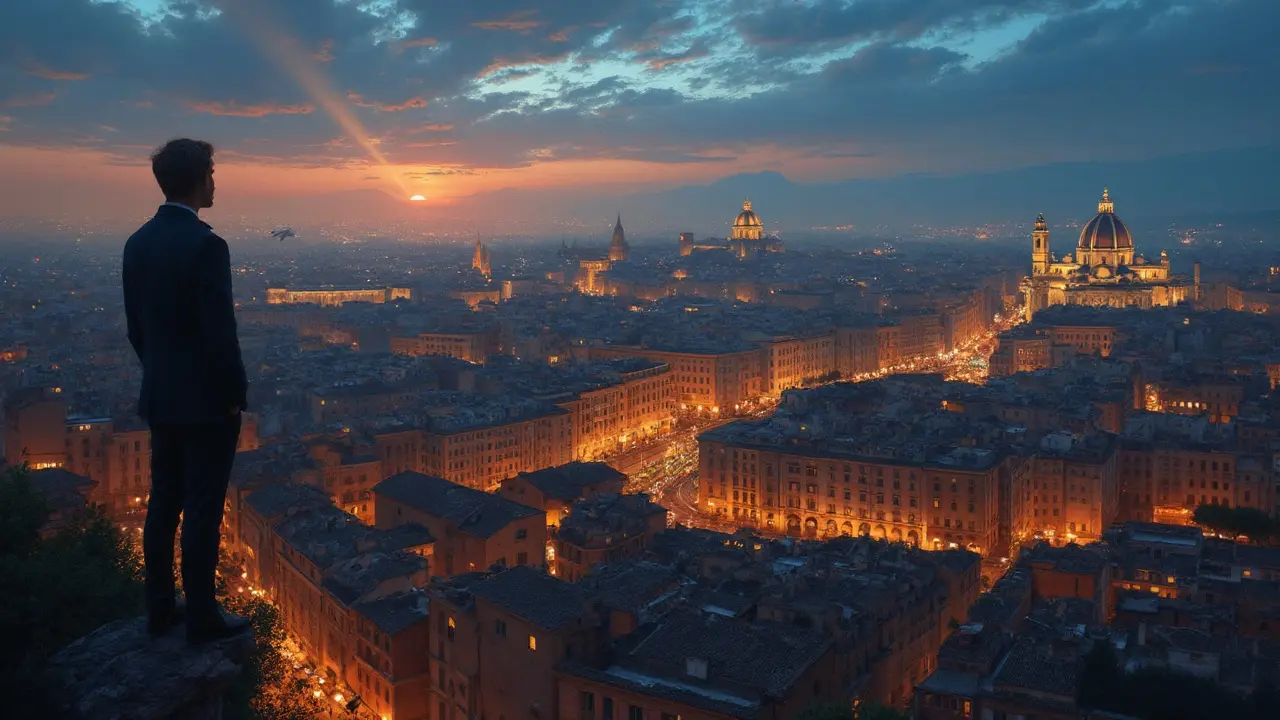
Practical Tips for Seeing Rome Through Her Lens
Federica Tommasi has a simple rule: focus less on the postcard spots and more on how light shapes what you see. If you want to capture that vibe she’s famous for, timing and location make all the difference. Here’s how you can get closer to her vision:
- Golden hour matters: That soft light you see in Tommasi’s work is mostly caught about 45 minutes before sunset and the first 30 after. In Rome, in June, that’s usually between 8:00 pm and 9:15 pm.
- Get off the main routes. Tommasi sometimes spends hours in Trastevere and Monti, waiting for the right street lamp or an old Vespa under a flickering sign to show up. The quiet streets often have the richest character.
- Look for reflections. After a short rain, Rome’s cobblestones mirror the old façades. Tommasi is well known for evening shots near Piazza della Madonna dei Monti, where puddles pull double duty.
- Adjust your camera’s white balance. Streetlights throw out warm, golden tones. On most phones and cameras, tweak the white balance setting towards daylight for more natural skin tones, just like Tommasi does.
- Don’t set up a tripod. Most of her best work is handheld—she moves with the light and isn’t afraid to improvise. You get more honest results this way.
Here’s a quick look at some prime lighting times in Rome during different months. Trust these for your own shots or when just soaking in the atmosphere:
| Month | Sunset Time | Best Golden Hour |
|---|---|---|
| June | 8:42 pm | 8:00 pm – 9:15 pm |
| March | 6:13 pm | 5:30 pm – 6:45 pm |
| October | 6:40 pm | 5:55 pm – 7:10 pm |
If you’re hoping to see Rome as Tommasi does, skip the crowds at Colosseo right at noon. Instead, wander in neighborhoods where laundry lines cross narrow lanes and single Roman lights throw shadows you’d never find in a tourist brochure. That’s where the real mood of the city hides.

